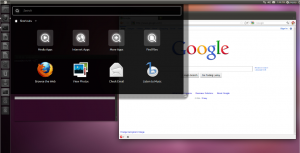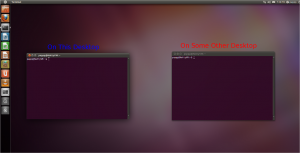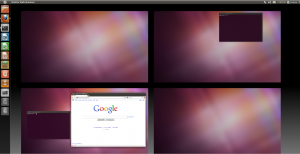The Haiku Project pushed out an Alpha3 release over the weekend, and, having an abiding love for interesting little OSes, I pulled it down to fiddle with, just like the previous releases.
Just for fun, I wrote this post and did the requisite research and link gathering in a Haiku Alpha3 VM – although admittedly I brought it up in Chrome on the host system for a spell check before posting, as that feature, while nominally present, didn’t appear to work in WebPositive.
Since Alpha2 Haiku has gained some more polish, both in the OS and the growing collection of software, without gaining bulk. The clean, well designed interfaces, integral threading support, and search and media features that made BeOS so impressive (and portable) in the 90s have been showing up elsewhere (sometimes rather directly; Apple hired Dominic Giampaolo, who worked on the search and indexing features in BeOS and BeFS for Spotlight, which is an inferior clone of BeOS’s integral search mechanism), but using them on “BeOS” again is a reminder that Be was generally better, having been designed from the ground up with those features in mind.
The lack of bulk is the really refreshing thing – Haiku presents a POSIX system with a custom graphical interface in an incredibly light package. To make some examples, bringing up a Linux box with X and a modern desktop generally soaks up on the order of 200MB of RAM. Haiku A3 boots into 75, and isn’t missing anything obvious. Chromium routinely gorges itself on several gigabytes of RAM – presently, WebPositive (a webkit-based successor to the old BeOS native web browserNetPositive, which was charmingly full of puns and haiku, which are in turn the source of the Haiku project’s name) with eight tabs is using less than 85MB. We wont’ even talk about the other Desktop OS’s memory consumption behaviors.
There are a few things that are quirky to those acclimated to other modern OSes. Be’s window management behavior is a little different than other modern GUIs, but only takes a few minutes to get used to, and is certainly less aberrant than some of the more exotic X window managers. Similarly, the Alt- instead of Ctrl- based shortcuts take some instinct-breaking to use, but are sensible (they don’t interfere with terminals), and can be re-mapped if they become too frustrating.
The development process is pretty cool to watch too: I haven’t been involved or watching particularly closely, but every now and then high points like the row about package management(vitriolic external version linked) or the brilliant GCC Hybrid system that allows both legacy BeOS and modern software to work on Haiku pop into my sphere of attention and get me interested.
Admittedly, there are some unequivocal downsides. Hardware support is lacking, especially in terms of graphics drivers. Major strides have been made since A2 on the hardware front, with reasonably robust system for things like 802.11 wireless and printing in place now, but it is still deep in the second class citizen category drivers wise. Likewise, software for which there is no open specification (ie. Flash better than that provided by gnash) is completely absent. There is also the note that while it generally behaves better than the final releases of many pieces of software I’ve used, it is an alpha release. I managed to crash WebPositive with only a little bit of provocation, and I’m sure similar bugs exist elsewhere in the system.
The only new breakage I found with A3 is that it doesn’t seem to like to Boot in VirtualBox (at least v4.0.8) unless there is a serial device attached – I see no errors in the log it prints, but it likes to have it there. I just have it writing out to a log file in its VM directory to keep it happy.
If I had a resource-constrained system (particularly with limited screen real-estate and not much in the way of GPU, like a low end netbook), I’m pretty sure I’d try installing Haiku on it despite the Alpha-release roughness – it’s that impressive.






